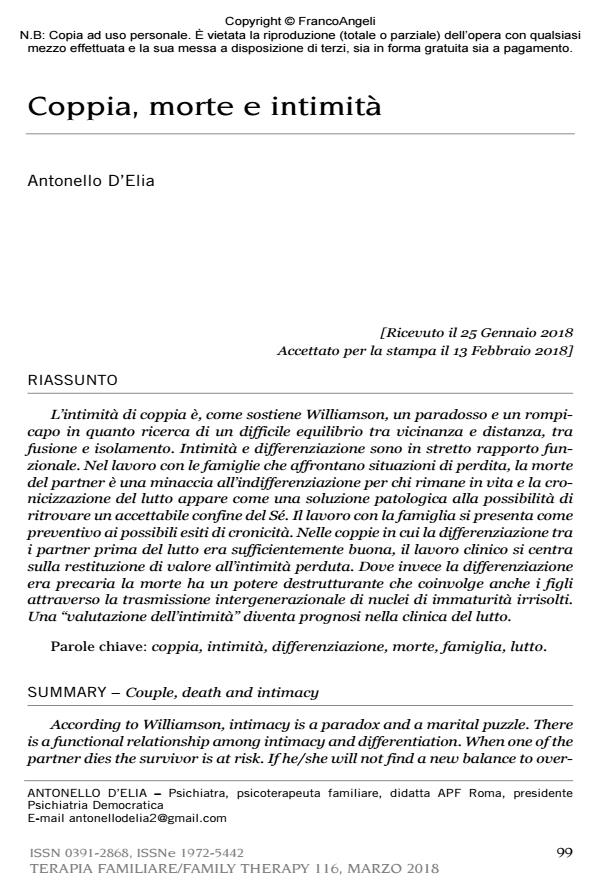Couple, death and intimacy
Journal title TERAPIA FAMILIARE
Author/s Antonello D’Elia
Publishing Year 2018 Issue 2018/116
Language Italian Pages 16 P. 99-114 File size 96 KB
DOI 10.3280/TF2018-001006
DOI is like a bar code for intellectual property: to have more infomation
click here
Below, you can see the article first page
If you want to buy this article in PDF format, you can do it, following the instructions to buy download credits

FrancoAngeli is member of Publishers International Linking Association, Inc (PILA), a not-for-profit association which run the CrossRef service enabling links to and from online scholarly content.
According to Williamson, intimacy is a paradox and a marital puzzle. There is a functional relationship among intimacy and differentiation. When one of the partner dies the survivor is at risk. If he/she will not find a new balance to overcome the loss, cronicity seems to be a possible solution. For the couples with a previous good differentiation, clinical work aims to give new value to the lost intimacy. While partners differentiation was weak, death can lead to a distruptive outcome, even in new generations. An intimacy assessment becomes prognostic in the clinical work with families who experienced a loss.
Keywords: Couple, intimacy, differentiation, death, family, mourning
Antonello D’Elia, Coppia, morte e intimità in "TERAPIA FAMILIARE" 116/2018, pp 99-114, DOI: 10.3280/TF2018-001006